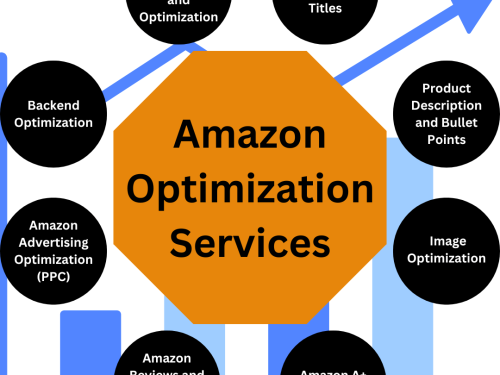In today’s digital world, 3D rendering has become an essential tool across a variety of industries, from architecture to gaming and beyond. This powerful technology has revolutionized how professionals visualize and communicate their ideas, helping to bring even the most complex designs to life.
Whether you are an architect to show an example of a building constructed in the future, a product designer in order to take on the latest concept, or a filmmaker creating a virtual place, 3D rendering is an art of creating impressive and realistic visuals.
What is 3D Rendering?
In a nutshell, 3D rendering is the process of transforming 3D models into 2D images using computer software. While still adding lighting, textures, shadows, and colors, the model leads to a very realistic or highly stylized picture of the object or scene. It gives an immeasurable prowess of creativity and accuracy through the facilitation of doing real-time modifications on virtual objects, adjusting perspectives, and inputting real-world physics into digital renderings.
The term 3D rendering is often interchanged with the term 3D visualization though the latter would be a much larger concept within it of developing and representing 3D models. Whether you design grand architectural visions or work on cinematic animations, 3D rendering helps you bridge the gaps between your imagination and reality.
Types of 3D Rendering
There are numerous types of 3D rendering, depending on different needs. Here are the most common types:
1. Real-time Rendering
Real-time rendering is generated on the fly, and it creates images in real time when a user interacts with a 3D model. Real time rendering technologies are commonly utilized in video games and interactive simulations. Game engines, such as Unreal Engine and Unity, were developed based on real-time rendering technology to deliver an immersive experience among users that interact with their environments.
2. Photorealistic Rendering:
Photorealistic rendering is the process of producing images that are indistinguishable from real photos. It’s a very common method used throughout the architecture, interior design, and product visualization industries for realistic renditions of objects and space. Such photorealism is achieved by mimicking natural lighting, textures, and environmental effects such as reflections and shadows.
3. Non-Photorealistic Rendering (NPR)
Unlike photorealistic rendering, NPR is dedicated to creating images that have a more stylized or artistic look. The technique is often used in animations, cartoons, and illustrations where the purpose is not about simulating real-world imagery but rather creating some distinct artistic look.
The Applications of 3D Rendering in Many Industries
The versatility of 3D rendering makes it a potential tool for many fields. We should explore how different industries are applying this technology:
1. Architecture and Interior Design
3D rendering has changed the way architecture is, architectural and interior designers now have the capacity to produce photorealistic models of buildings with their different spaces as detailed and accurate as possible, which they can present to clients on the basis of visualization before real construction.
Photorealism enables professionals to depict every minute detail ranging from the texture of the walls up to how light enters through the windows.
2. Product Design
Product design utilizes 3D rendering to create digital prototypes. The designer can make a virtual model without investing in expensive physical models of the product that may only look, rather than feel, the way the final product should be. This can save development time while also making iteration and testing easier.
3. Film and Animation
The film industry has almost become dependent on 3D rendering for visual effects and animations. A whole environment, character, or action scene can therefore be created digitally, making filmmakers enjoy an incredible range of creative options. From animated movies to blockbusters made from millions of dollars, 3D rendering integrates the whole process for formulating cinematic experiences.
4. Marketing and Advertising
3D rendering is used by marketers and advertisers to create highly appealing images for advertisements. It could be product rendering for an online advertisement, a virtual reality experience for a campaign, or it could even be just a simple animation in a commercial that 3D images help stand marketing content more distinctly, thereby attracting the right set of people.
The 3D Rendering Process
A 3D rendering process requires a set of processes working as layers to provide an output.
Modeling:
One of the main phases present in making a 3D object involves showing. This stage entails the construction of a computer model representation of the object through specialized designing software. It could even be something as simple as a geometric shape to quite complex architectural structures.
Texturing:
Once the 3D model is created, finishing is the next step. Texture is used to give the 3D model a realistic look. This could be in the form of woods, metal, or textiles, along with wrinkles, scratches, or reflections.
Lighting
Lighting is an important step of 3D rendering since it interfaces to the final appearance the image is more than likely to have. Artists can adjust the light intensity, light direction, and light color to create a variety of different moods and environments. Thus, full realism in the scene will arise from proper lighting of the 3D model.
Rendering
Finally, the computer shall compute all the information for the model, texture, and lighting for a 2D image. This may take some minutes to hours depending on the complexity of the scene and the rendering software used.
Popular 3D Rendering Software
There is just about every kind of software you could want for 3D rendering. Each one is different and some offer a little bit more than others. Here are a few of the top 3D rendering programs for pros:
Autodesk 3ds Max:
This is a powerful tool in architecture, game design, and visual effects.
Blender:
A free and open-source software that can handle an all-encompassing set of tools for modeling, texturing, and rendering.
V-Ray:
It is already famous because it can build photorealistic images for architects and interior designers.
Cinema 4D:
This has captivated everyone in the motion graphics field, as it offers easy features for creating dynamic animations and renderings.
Future Trends in 3D Rendering
With innovation constantly developing, the world of 3D delivering keeps on changing. Here are a few trends that are determining the future of this field:
1. AI and Machine Learning
Artificial intelligence, and machine learning, are also entering 3D rendering territory. These technologies can enhance the rendering process, cut short rendering time, and eventually be helpful in task automation, such as texture generation or lighting setup.
2. AR and VR Augmented Reality (AR)
The increasing popularity of VR and AR expands the scope for 3D rendering. In virtual reality, users can step into fully rendered 3D environments, whereas augmented reality displays the real world with superimposed 3D objects. These technologies are making new possibilities in interactive and immersive experiences.
3. Cloud Rendering
Such trends bring about the phenomenon of cloud rendering, which will allow users to offload the heavy computational loads of rendering onto cloud-based servers. It not only accelerates processes but enables it for those with less powerful hardware, thus spreading out usage.
Conclusion
In a nutshell, 3D rendering is really a must-have for anyone into design, architecture, gaming, or even filming. It transforms the idea into an almost surreal image with a tremendous amount of details; it is changing lots of aspects of numerous industries and inspiring creativity. As the technology continues to develop, it will become even more powerful and accessible for new visualization and design possibilities.
But 3D rendering mastery unlocks a world where dreams and reality blend together in joyous abandon, and by learning to render, you will be able to create visuals that are just enthralling, inspiring, and educational.




